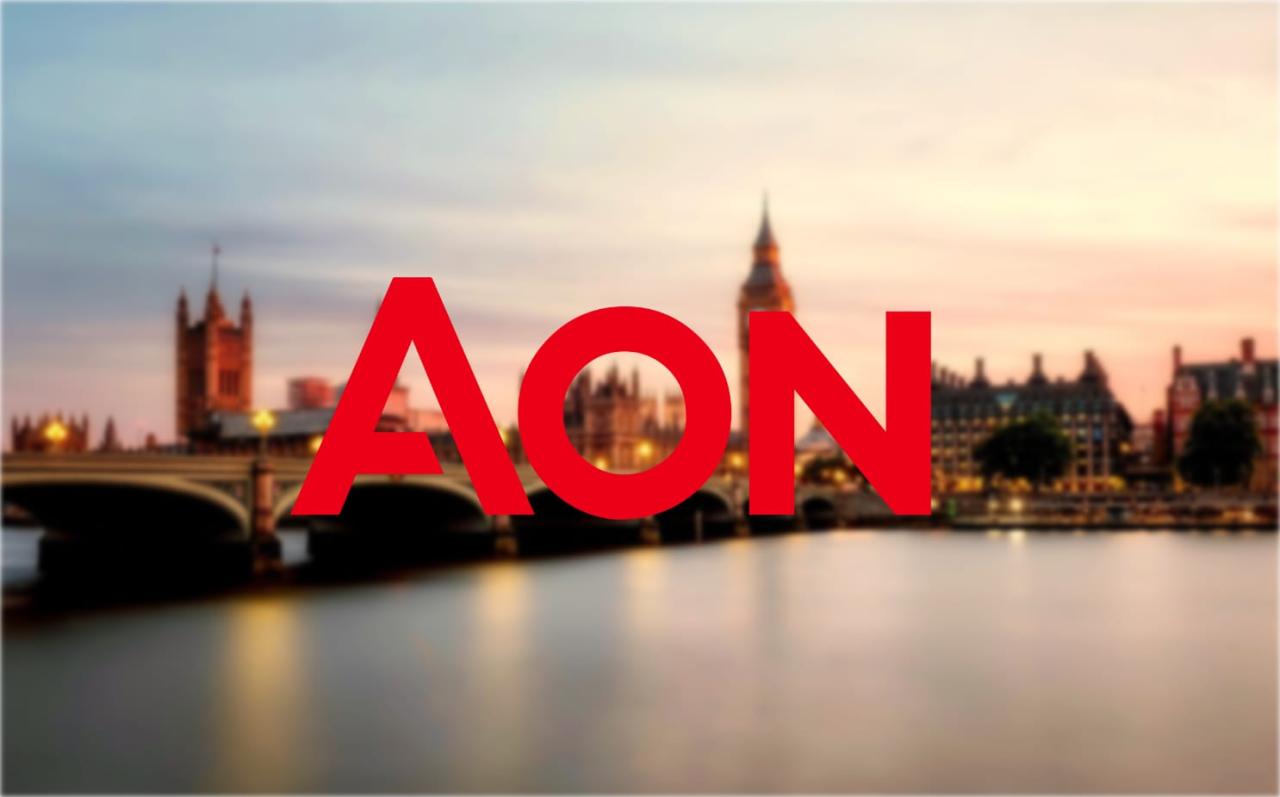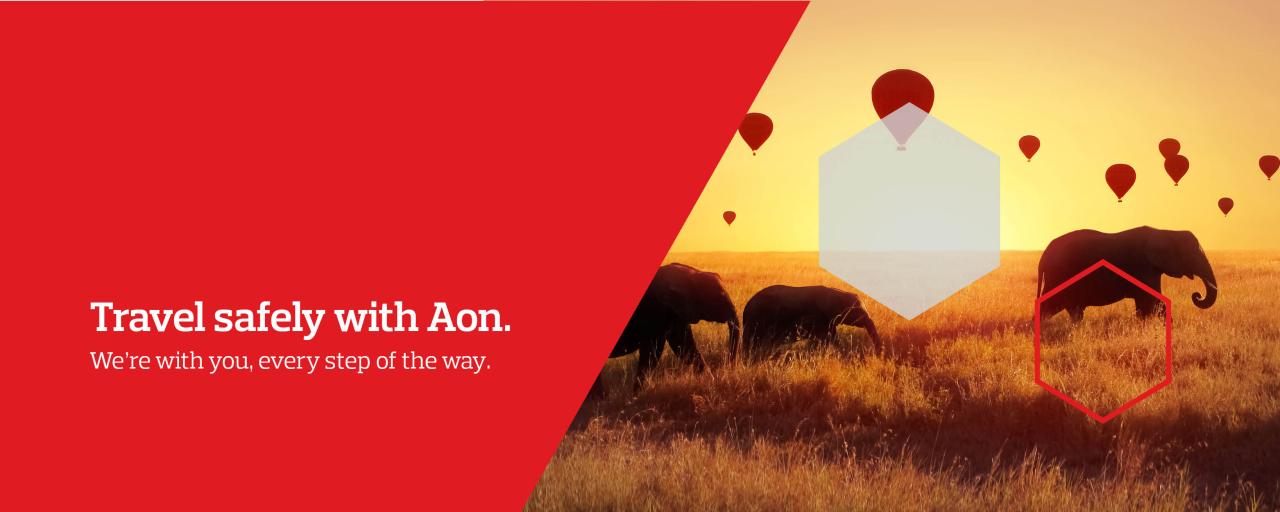Aon travel insurance provides a vital safety net for your adventures. It’s more than just a policy; it’s peace of mind, knowing you’re covered for unexpected events. From medical emergencies to trip cancellations, Aon offers various plans tailored to different needs and budgets. This guide explores Aon’s offerings, helping you choose the right coverage for your next journey.
We’ll break down the different plan types, compare them to competitors, and guide you through the claims process. We’ll also delve into customer reviews, policy exclusions, and marketing strategies, providing a comprehensive overview to empower you to make an informed decision. Understanding the nuances of travel insurance is key to a worry-free trip.
Aon Travel Insurance
Navigating the unexpected is part of travel, and having a reliable travel insurance plan like Aon’s can provide peace of mind. Understanding the claims process is crucial to ensuring you receive the support you need when things go wrong. This section details the steps involved in filing a claim with Aon Travel Insurance, providing examples and tips for a smoother experience.
Aon Travel Insurance Claims Process Steps
Filing a claim with Aon is generally straightforward. The process typically involves several key steps, though specific requirements might vary slightly depending on the type of claim. It’s always best to refer to your policy documents for the most accurate and up-to-date information.
- Report the incident: Immediately report the incident to Aon, usually via phone or their online portal. This initial notification is vital for initiating the claims process. Note down the date, time, and location of the incident, as well as any relevant details.
- Gather necessary documentation: Collect all supporting documentation related to your claim. This is crucial for a prompt resolution. Examples include police reports (for theft or accidents), medical bills, flight cancellation confirmations, and receipts for any expenses incurred.
- Complete the claim form: Aon will provide a claim form which needs to be filled out accurately and completely. Provide all the required information and attach all the supporting documents.
- Submit your claim: Submit your completed claim form and supporting documents to Aon via mail, fax, or their online portal, depending on their instructions.
- Aon reviews your claim: Aon will review your claim and supporting documentation. This process may take some time, depending on the complexity of the claim.
- Claim decision: Once Aon has reviewed your claim, they will inform you of their decision and, if approved, process your payment.
Common Claim Scenarios and Required Documentation
Understanding what documentation is needed for different scenarios is key to a quicker claim process.
- Trip Cancellation: Documentation might include a doctor’s note (for illness), a death certificate (for a family member’s death), or official documentation from an airline or other travel provider regarding the cancellation.
- Medical Expenses: Original medical bills, receipts for medications, and a doctor’s report detailing the injury or illness are essential.
- Lost or Stolen Belongings: A police report is crucial, along with receipts or proof of purchase for the lost or stolen items, and ideally, photos of the items.
- Emergency Medical Evacuation: Documentation from the medical facility, ambulance services, and air ambulance company, along with receipts for all expenses, will be needed.
Tips for a Smooth Claims Process
Careful preparation and clear communication can significantly streamline the claims process.
- Read your policy carefully: Understand your policy coverage and exclusions before you travel.
- Keep detailed records: Maintain records of all expenses, receipts, and relevant communication with Aon.
- Respond promptly: Respond to Aon’s requests for information as quickly as possible.
- Be accurate and honest: Provide accurate and complete information in your claim form and supporting documents.
- Keep copies of everything: Make copies of all submitted documents for your records.
Aon Travel Insurance Claims Process Flowchart
Imagine a flowchart with boxes connected by arrows.The first box: “Incident Occurs”. An arrow leads to “Report Incident to Aon”. This connects to “Gather Documentation”. Next, “Complete and Submit Claim Form”. This leads to “Aon Reviews Claim”.
So, you’re planning a trip and need travel insurance? Smart move! Check out Aon travel insurance for reviews to see what others say about their experiences. Then, if you’re ready to dive in and get a quote, head over to Aon travel insurance for assistance and to compare plans. Getting the right coverage is key for peace of mind, so do your research before you go!
Finally, “Claim Decision (Approved or Denied)”. If approved, an arrow points to “Payment Processed”. If denied, an arrow points to “Explanation of Denial”. Each box represents a step, and the arrows show the progression of the process. The flowchart visually represents the linear steps involved in filing a claim.
Aon Travel Insurance

Aon offers a range of travel insurance plans, but it’s crucial to understand what’snot* covered to avoid unexpected costs during your trip. Knowing the policy exclusions and limitations helps you make informed decisions and potentially purchase supplementary coverage where needed. This information ensures you’re adequately protected for the specific type of travel you’re undertaking.
Policy Exclusions and Limitations
Aon Travel Insurance policies, like most travel insurance, have exclusions and limitations. These are specific situations or events that aren’t covered under the policy. Understanding these is vital to avoid disappointment and financial burden if an unforeseen event occurs. Common exclusions often relate to pre-existing medical conditions, adventurous activities, and certain destinations known for high-risk factors.
So, you’re planning a trip? Awesome! But before you pack your bags, remember travel insurance. Check out this review site for Aon travel insurance to see what others say. Then, if you need assistance, head straight to the Aon travel insurance assistance page – it’s super handy to know where to go if something goes wrong.
Getting insured is a smart move; don’t skip this step!
Common Exclusions and Their Implications
Several factors can lead to claims being denied. Pre-existing medical conditions, for example, might not be covered unless specifically declared and an additional premium paid. Engaging in high-risk activities, such as extreme sports, often falls outside standard coverage. Travel to regions with political instability or significant health risks might also have limited or no coverage. These exclusions can leave travelers financially responsible for significant medical bills, trip cancellations, or emergency evacuations.
It’s essential to carefully review your policy wording and consider supplementary coverage if your travel plans involve any of these high-risk factors.
Examples of Exclusions and Alternative Solutions
The following table details common exclusions, their descriptions, examples, and potential alternative solutions.
| Exclusion | Description | Example | Potential Alternative Solution |
|---|---|---|---|
| Pre-existing Medical Conditions | Conditions diagnosed or treated before the policy’s effective date. | A traveler with a history of heart conditions experiences a heart attack during their trip. | Declare the pre-existing condition when applying for insurance and potentially purchase a rider for additional coverage. |
| Adventure Activities | High-risk activities not typically covered under standard policies. | A traveler participating in bungee jumping suffers an injury. | Purchase an adventure sports add-on to the policy or consider a separate insurance policy specifically designed for adventure activities. |
| Travel to High-Risk Destinations | Areas with significant political instability, health risks, or natural disaster threats. | A traveler’s trip to a region experiencing civil unrest is interrupted. | Thoroughly research the destination’s safety and risk levels before traveling. Consider purchasing a policy with broader coverage or opting for travel insurance from a provider specializing in high-risk destinations. |
| Acts of War or Terrorism | Events involving armed conflict or terrorist attacks. | A traveler’s trip is disrupted due to a terrorist attack at their destination. | While often excluded, some policies may offer limited coverage for repatriation or emergency medical expenses. Carefully review the policy wording and consider purchasing a specialized policy if traveling to a region with heightened security concerns. |
Aon Travel Insurance

Planning a trip can be exciting, but unexpected events can quickly turn a dream vacation into a financial nightmare. That’s where travel insurance comes in, providing a safety net for unforeseen circumstances. Aon Travel Insurance offers various plans to protect your trip investment and your well-being while you’re away from home.
Aon Travel Insurance: Medical Emergency Abroad
Imagine this: You’re backpacking through Southeast Asia, enjoying the vibrant culture and stunning landscapes. One evening, you slip on a wet cobblestone street and break your leg. You’re rushed to a local hospital, where you receive emergency treatment and require several days of hospitalization. The medical bills alone are astronomical, far exceeding what your personal health insurance covers.
With Aon Travel Insurance, however, your policy would likely cover a significant portion, if not all, of these unexpected medical expenses. The claim process would involve submitting the necessary documentation – hospital bills, doctor’s reports, and your policy details – to Aon. Upon verification, Aon would process the claim, reimbursing you for the eligible medical costs. The outcome: Instead of facing crippling debt, you receive financial relief, allowing you to focus on recovery and enjoying the remainder of your trip, albeit with a slightly altered itinerary.
Aon Travel Insurance: Limited Coverage Scenario
Let’s consider a different scenario: You’re on a skiing trip in the Alps. Despite warnings about the challenging conditions, you venture off-piste, resulting in a serious injury. Your Aon Travel Insurance policy might cover the emergency medical treatment, but it might not fully cover the cost of a specialized rescue operation needed to get you off the mountain. This is because many policies have exclusions or limitations for activities considered high-risk.
The terms and conditions of your specific policy would detail these exclusions. In this case, the claim process would still involve submitting the necessary documentation. However, the reimbursement might only cover a portion of the total expenses, reflecting the policy’s limitations regarding high-risk activities. The outcome: You’d still receive some financial assistance, but you’d likely have to bear a greater portion of the cost yourself.
This highlights the importance of carefully reviewing your policy’s terms and conditions before embarking on potentially risky activities.
Ultimately, choosing the right travel insurance depends on your individual circumstances and travel style. Aon offers a range of options to suit various needs and risk tolerances. By carefully reviewing the policy details, understanding the claims process, and considering the potential scenarios, you can confidently select the Aon travel insurance plan that best protects your investment and ensures a smooth, enjoyable trip.
Remember to always read the fine print and don’t hesitate to contact Aon directly with any questions.
Essential Questionnaire
What happens if I need to cancel my trip due to a medical emergency?
Aon’s policies typically cover trip cancellations due to medical emergencies, provided you have the necessary documentation from a doctor. Specific details vary by plan, so check your policy wording.
Does Aon cover pre-existing medical conditions?
Coverage for pre-existing conditions is often limited or requires additional purchase. Check the policy carefully, and if you have concerns, contact Aon before purchasing the policy to discuss your specific needs.
How long does it take to process a claim?
Processing times vary depending on the complexity of the claim and the required documentation. Aon aims for a timely resolution, but it’s best to allow sufficient time for processing.
What kind of documentation do I need to file a claim?
Necessary documentation usually includes proof of purchase, medical bills (if applicable), police reports (if applicable), and other relevant supporting evidence. Your policy will Artikel the specific documents required.